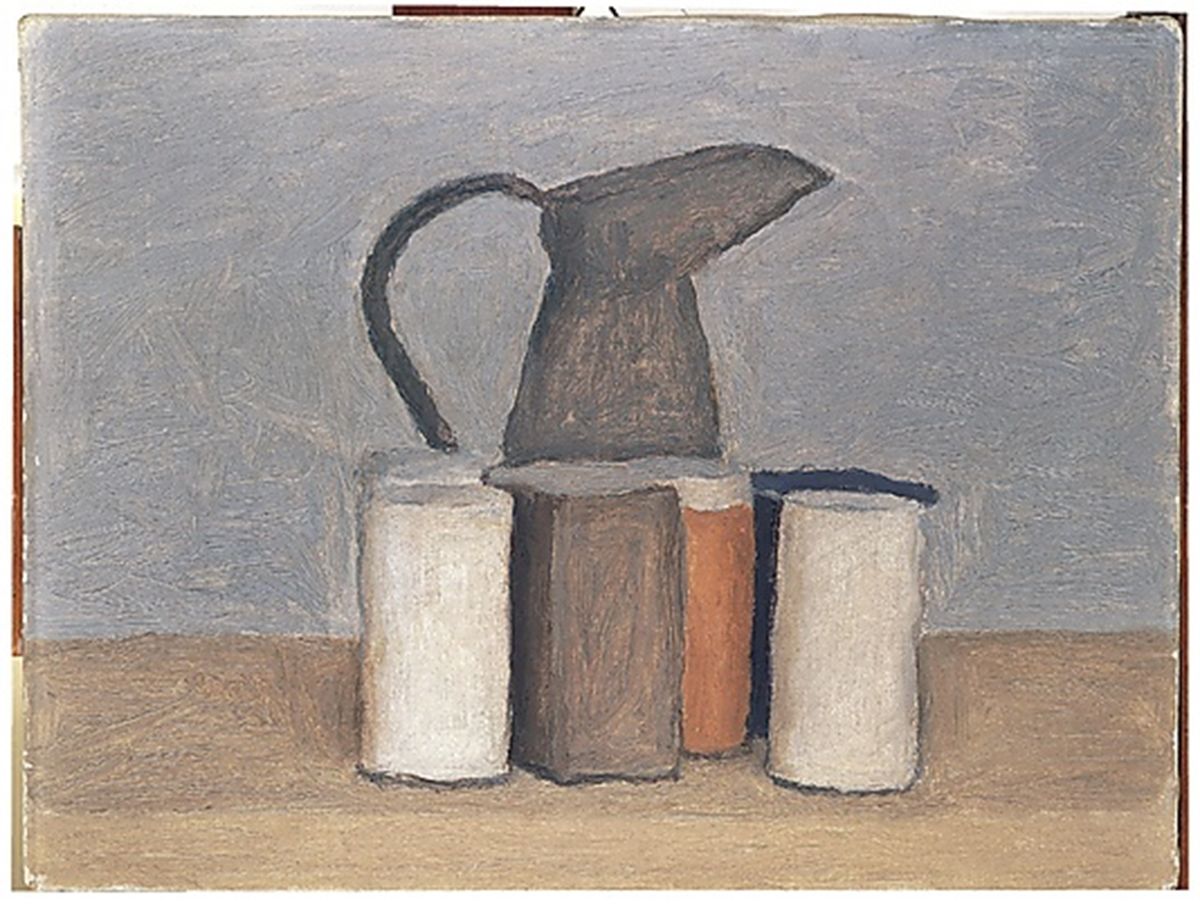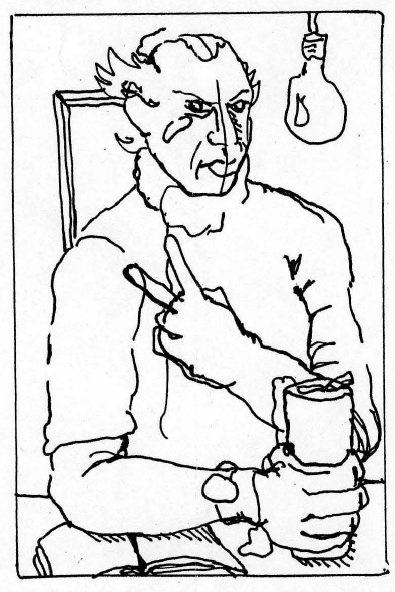DURER, ALLEGORY, PORTRAITURE
Project from Intermediate Drawing with Neil Bender and Ellen Mueller, Spring 2009
When looking at the Durer engravings particularly, look at his ability to create subtlety
between parts. Like Morandi, he’s able to create a powerful experience through a subtle shift of
line and a dramatic control -and range- of value.

(Morandi – credit)
While extremely intricate and layered, the drawings have a strong sense of exaggeration through a strong sense of craft. The qualities of the figures have been dramatized, The gestures become symbolic and carry import.
You will execute an allegorical portrait or self-portrait. The image should be a view of
the top half of the figure, with the figure holding a symbolic item in one hand, and the other
hand making some sort of gesture. The head should be tilted at 2/3 view, with the eyes
addressing the viewer. There must also be a ground; a definitive space behind the figure, not just atmosphere. The figure should take up most of the surface (see the rough illustration below).

Buy one sheet of Arches bot press watercolor paper (a smooth surface) 30″ x 22″. Execute the drawing on ½ of the sheet, 22″ tall by 15″ wide. (You will use the other half for an
in-class project with the figure.) You can start with a loose pencil sketch, but the image must be
executed with the pigment liner pens.
Examples to look at from your text Vitamin D: stylistically- Paul Noble, Zak Smith,
Sam Durant, and Frank Magnotta. Conceptually-Elizabeth Peyton, Wangechi Mutu, John
Currin, and Graham Little. Attached to the back of the drawing (typed, spell-checked, and no
longer than one page) should be a brief explanation of the influence of Durer and
some of these sources, and how they affected your decision-making process over the course of
making the drawing.
22″ X 15″ (VERTICAL FORMAT) WITH PIGMENT LINER PENS, DUE ___
